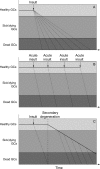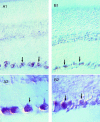Ganglion cell death in glaucoma: what do we really know?
- PMID: 10413706
- PMCID: PMC1723166
- DOI: 10.1136/bjo.83.8.980
Ganglion cell death in glaucoma: what do we really know?
Figures



References
Publication types
MeSH terms
Substances
LinkOut - more resources
Full Text Sources
Other Literature Sources
Medical
